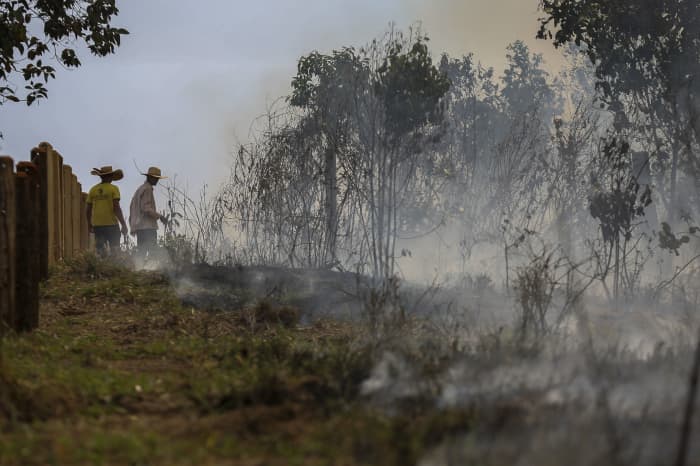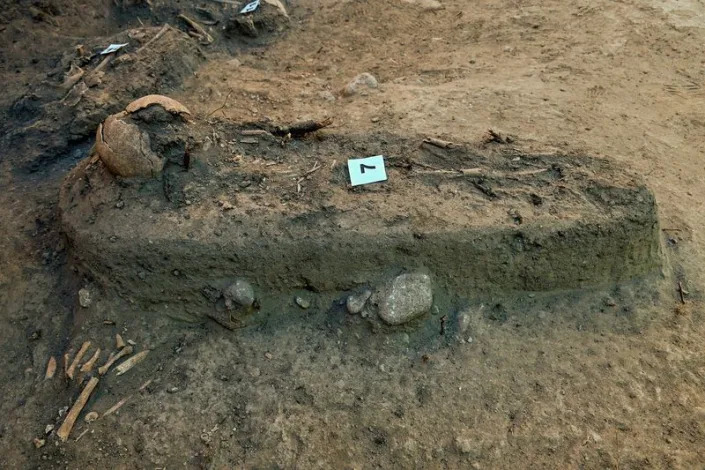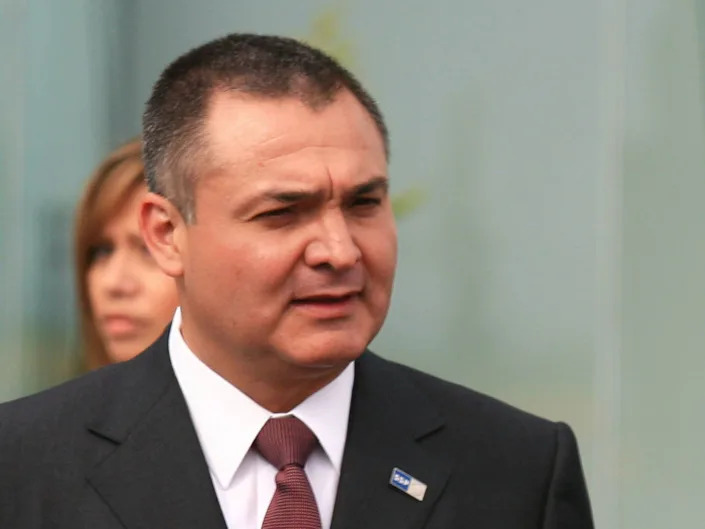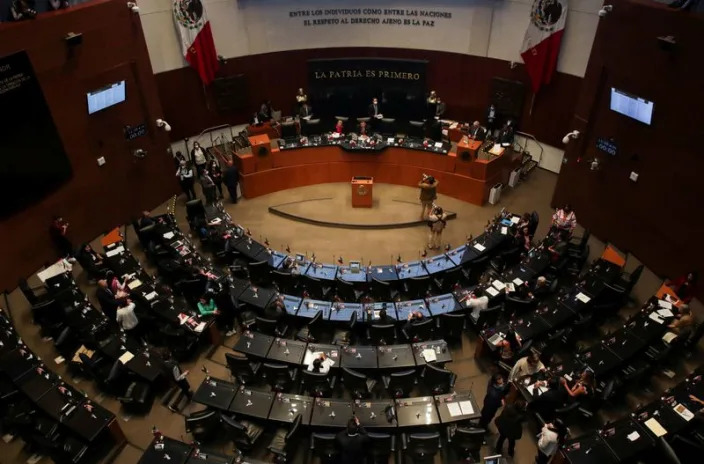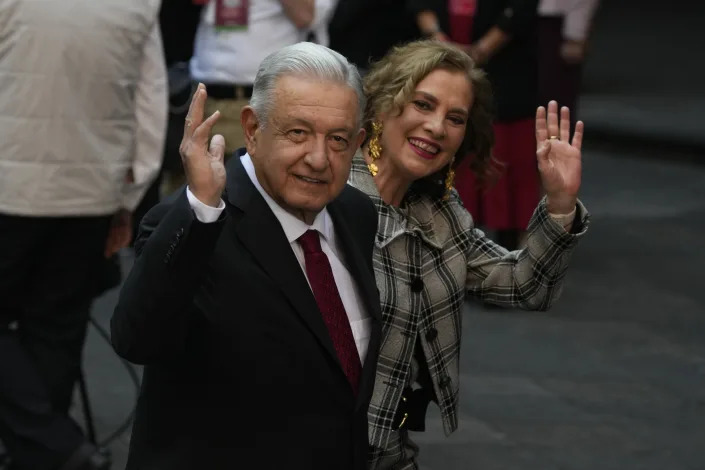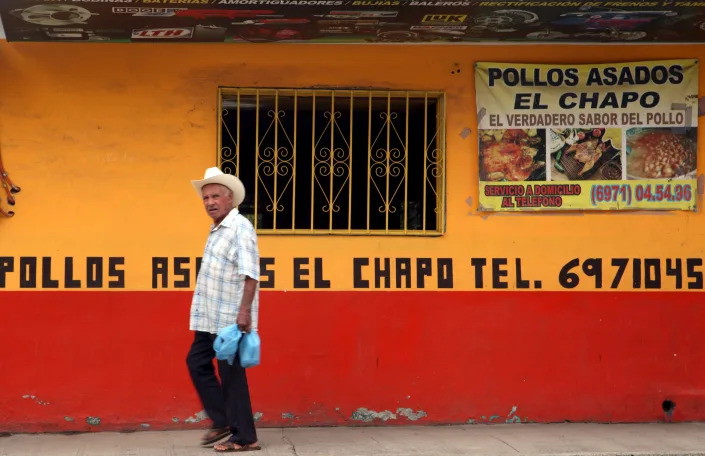
Kai Schultz and Faseeh Mangi
Wed, February 22, 2023
(Bloomberg) -- People crushed trying to buy subsidized food as inflation hits a 48-year high. The country going dark from power cuts. A former leader shot in the streets.
Pakistan is teetering on a precipice, with fiscal, humanitarian and political crises bringing it ever closer to the brink. As foreign reserves plummet, covering only three weeks of imports, the country is facing its worst economic meltdown in decades — echoing the fall of Sri Lanka and Ghana, but unspooling in a nuclear-armed nation with one of the world’s biggest populations.
The South Asian state is seeking a bailout from the International Monetary Fund again — something it’s done more than 20 times. But its predicament is far graver this time around, after deadly floods devastated millions last year, Russia’s invasion of Ukraine pushed up energy prices and dark clouds gathered over the world economy.
Pakistan may also be a harbinger of similar collapses in other debt-laden countries. Its woes are reigniting an increasingly tense debate about how the rest of the world should respond — and who should foot the bill. China, Pakistan’s biggest sovereign lender, is mired in disputes with multilateral banks over which parties should take the lead in restructuring sovereign debt.
“Everybody has to take a haircut,” said Amitabh Kant, the sherpa for India’s presidency of the Group of 20, which is helping to mediate. “It can’t be that the International Monetary Fund takes a haircut and it goes to settle Chinese debt.”
From Karachi to Lahore, poorer people are bearing the brunt as inflation touches every staple. The price of baby formula is up 15% in a month. Thousands of food containers are stuck at ports as the government curbs imports to preserve its last $3 billion in foreign currency. A man was crushed to death in the southeastern Sindh province last month after a crowd rushed officials distributing subsidized flour.
Abdur Rehman, 50, said the math has become impossible for his family of four. Filling up their motorbike a single time equates to about a sixth of his 18,000 rupee (about $70) monthly salary, which he earns cutting vegetables in a kitchen that supplies food for weddings.
“How will we go to work with these fuel prices?” he asked outside a gas station in Karachi, Pakistan’s bustling commercial capital on the Arabian Sea coast. “I’ve never seen such a difficult time.”
Fuel is an especially contentious issue. In 2022, former cricket star Imran Khan, then the prime minister, reduced and froze diesel and gasoline prices. The populist gesture helped lay the groundwork for the current crisis.
Political turbulence and terrorism are adding to the country’s problems. Pakistan keeps replacing its finance minister, and recent militant attacks are spooking investors, who worry that extremism is taking root again. Added to the mix is a government distracted by endless conflict with ousted premier Khan, and a military that has long held too much sway over the nation’s politics. Khan, who was shot in the leg while heading a protest march in November, is pushing for fresh national elections — at a time when many Pakistanis can’t afford bread.
Making matters worse, the country has been buffeted by a climate disaster. Floods last summer inundated about a third of the nation, killing more than 1,700 people, displacing millions and cutting economic growth by half. Last month, a power outage shut down huge swatches of the country for as long as 24 hours, disrupting mobile services and plunging hospitals in rural areas into darkness.
Maleeha Lodhi, who twice served as Pakistan’s ambassador to the US, said many of the country’s issues are of its own making.
“The chickens have come home to roost,” she said. “Decades of governments living beyond their means” have caught up. “Privileged elites have overlooked the public interest.”
For years, Pakistan’s economic problems have followed a familiar pattern. A dependence on imports and a low inflow of dollars has triggered repeated balance of payment crises. The country has also taken on piles of debt that didn’t generate foreign exchange, using Chinese financing, in particular, to build things like power plants that have failed to boost sluggish export numbers.
The country needs a “hard reset,” said Monis Rahman, a prominent startup founder. “Put all politicians on a boat and send them on an extended vacation. The ‘system’ has been bastardized beyond repair.”
Still, according to Lodhi, that doesn’t mean the world should let Pakistan collapse. For one thing, the lives of more than 230 million people would be affected. Beyond that, the country’s geostrategic importance — it borders China, India, Iran and Afghanistan — must be taken into account, she said.
Its nuclear capabilities — and the risk of them falling into the wrong hands — are another obvious reason.
The IMF is on the cusp of releasing money from a stalled $6.5 billion loan program. Fund officials’ patience had been running thin as they called on the country to pass austerity measures, like removing fuel subsidies and getting more people to pay tax.
Pakistan’s new premier, Shehbaz Sharif, had been reluctant to meet all the fund’s demands in an election year, but recently Pakistan loosened restrictions on its currency, increased electricity prices and added new taxes to raise 170 billion rupees by June. Reaching a deal with the fund is all the more important because Pakistan’s allies in the Middle East have demurred on sending aid until it does.
But the amount on the table from the IMF is still pennies given Pakistan’s total debt of about $240 billion.
Other emerging economies are watching closely. Between 2010 and 2020, poorer nations’ external debt more than doubled to $860 billion, according to World Bank data. Set against a broader post-pandemic slowdown, many are no longer able to make their payments, as interest rates jump and a strong dollar cheapens their currencies. The IMF estimates that a quarter of emerging markets now face “default-like borrowing spreads.”
Economists warn of a lost decade of growth for the world’s most vulnerable countries, many of which slid deeper into poverty during the Covid years. The conditions are not dissimilar from the Latin American debt crisis of the 1980s, when a surge in private lending to developing nations preceded a perfect storm of external shocks — among them, Iraq’s invasion of Iran — that caused years of pain. Egypt, Ethiopia and Tajikistan are among the countries facing problems.
Analysts say Pakistan could still avert a default. Brad Setser, an economic policy expert at the Council on Foreign Relations in Washington, said the country must negotiate a “serious reprofiling” of its payments. Most of Pakistan’s external debt of around $100 billion is from multilateral and bilateral sources, including the Paris Club, a mostly Western group of lenders, the IMF and China, which holds about $30 billion. Only $8 billion of total debt is Eurobonds.
“The X factor is China,” said Murtaza Syed, a former IMF official and ex-deputy governor of the State Bank of Pakistan. “China is not part of the old boys’ club of the Paris Club, which used to be a very good coordinating mechanism for restructurings.”
From 2006 to 2020, the share of external debt owed to China by poorer nations surged to 18% from 2%, according to IMF data, making it the world’s largest sovereign creditor to developing countries. For the 22 members of the Paris Club, the proportion fell to 11% from 28%.
As the mix of global creditors diversifies, China has lobbied to change the system for restructuring sovereign debt, which typically exempts lending by multilaterals. The World Bank and others have rejected Beijing’s demands, jeopardizing efforts by G-20 nations this week to reach a consensus on fixes to the Common Framework. That initiative brings the Paris Club and traditional creditors around the same negotiating table with China.
The rift has delayed efforts to ease debt burdens in struggling countries like Zambia, which sought relief about two years ago but has yet to reach an agreement. At a briefing, Mao Ning, a Chinese foreign ministry spokesperson, said a deal in Zambia “lies in the participation of multilateral financial institutions and commercial creditors in the debt-relief efforts.”
“China really needs to come to the table,” Janet Yellen, the US treasury secretary, said recently of the delay. “China's lack of willingness to comprehensively participate and to move in a timely way has really been a roadblock.”
Whatever the case, time is ticking for Pakistan, which is the most populous nation to waver.
The country’s credit ratings have been downgraded twice in four months by Fitch Ratings and long-term dollar bonds trade at distressed levels. Pakistan also eased controls on the rupee, which lost 15% of its value in January, the biggest monthly drop in data compiled by Bloomberg going back to 1989. In dollar terms, the benchmark KSE-100 Index is near its lowest level in about a decade.
Syed said Pakistan can’t break its endless cycle of bailouts and crises without painful decisions. The nation has reached a point where its debt is simply unsustainable, he said. Restructuring may be the only way to avoid becoming another Greece — or worse.
If that becomes the accepted view, the question then is how it’s carried out.
“People are asking whether debt is going to lead to a lost decade for developing countries and emerging markets,” Syed said. “Pakistan is one of those countries. We may be the sort of canary in the coal mine for how this debt problem gets resolved, if at all.”
--With assistance from Ismail Dilawar, Akshay Chinchalkar and Ruchi Bhatia.
.jpg)


